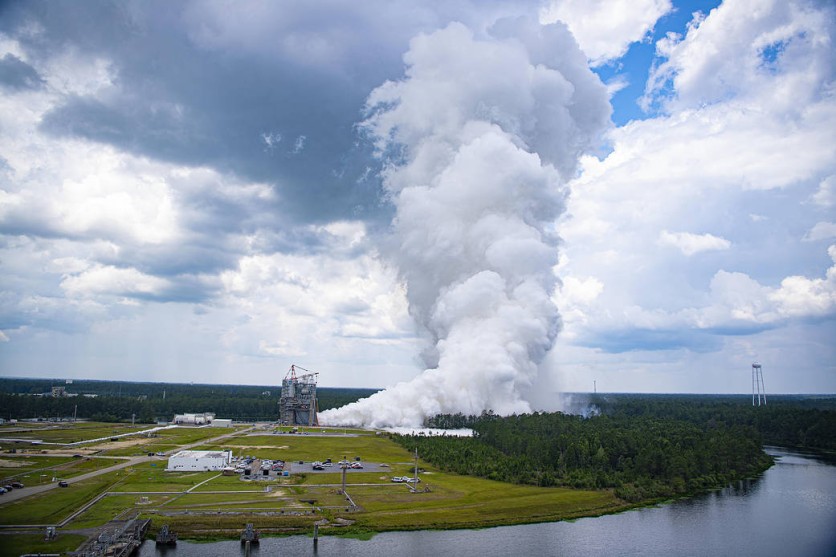NASA has achieved another significant milestone in its mission to return humans to the Moon as it successfully conducted critical tests for the Artemis V moon rocket.
The space agency's RS-25 certification engine test series reached a pivotal point with a successful fire on June 1 at the Fred Haise Test Stand in NASA's Stennis Space Center, located near Bay St. Louis, Mississippi.
This marked the ninth test in a crucial 12-test series, with the remaining three tests scheduled throughout June.

Certifying New RS-25 Engines
The purpose of these tests is to certify the production of new RS-25 engines by Aerojet Rocketdyne, the lead contractor, for future deep space missions, starting with the Artemis V mission.
During the fire, operators powered the RS-25 engine for over eight minutes, the same duration required to launch the Space Launch System (SLS) rocket carrying astronauts aboard the Orion spacecraft into orbit.
In an effort to ensure operational safety, the engine was fired up to 113% power, surpassing the 111% level needed during launch.
The SLS rocket relies on four RS-25 engines, which work in unison to generate an impressive combined thrust of up to 2 million pounds.
NASA successfully launched the inaugural Artemis I mission last November, and the agency is now focused on future Artemis missions that aim to bring humans, including the first woman and the first person of color, back to the Moon.
Sustainable Presence on the Moon
NASA's ultimate goal is to establish a sustainable presence on the Moon in collaboration with commercial and international partners while simultaneously developing the necessary technologies and capabilities for human missions to Mars.
The RS-25 certification engine test series plays a crucial role in ensuring the reliability and performance of the engines that will power the Artemis V mission and subsequent deep space ventures.
By exceeding the power levels required for launch, NASA engineers have provided themselves with an additional margin of safety, emphasizing the agency's commitment to meticulous preparation and operational excellence.
Completing these critical tests brings NASA one step closer to realizing its ambitious lunar exploration goals. With each milestone achieved, confidence grows in the agency's ability to undertake complex missions and push the boundaries of human exploration.
As NASA continues to make significant progress in its Artemis program, the world eagerly awaits the day when astronauts will again set foot on the lunar surface, marking another historic achievement for human space exploration.
Related Article: NASA Will Land On The Moon For The First Time in 50 Years l Here's Everything You Need To Know About Artemis 1





